
The Mysteries of the Deep Blue Sea

Did you know our oceans cover 71% of the Earth’s surface? That means land only accounts for 29% of our planet, leaving a large percentage of this amazing world undiscovered beneath the ocean’s depths. One such discovery has scientists in a frenzy: a lost city under the sea.
Lost to Time
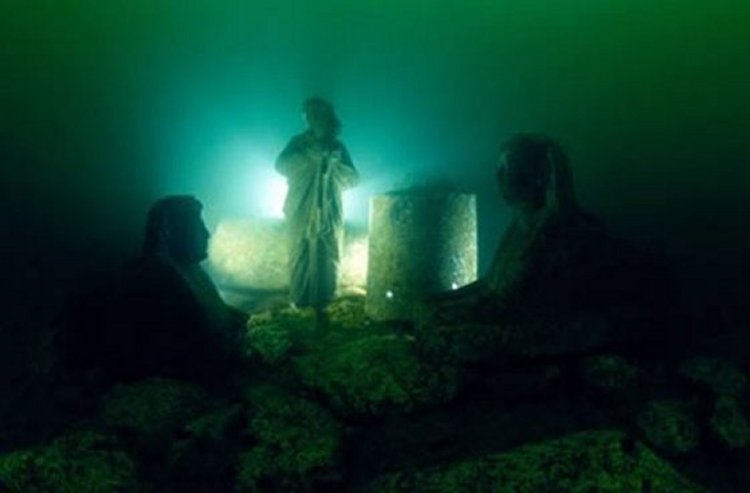
It was believed the ancient city of Heracleion was lost under the sea over 1200 years ago, never to be seen again. However, a group of divers off the coast of Egypt made a miraculous discovery in the Abu Qir Bay, proving what was once lost can sometimes still be found.
A Bustling Port

Built during the 6th century B.C., Heracleion was an ancient Egyptian city on the Canopic Mouth of the Nile. The city was Egypt’s main port for not only international trade but tax collection. According to historians, the city flourished from 6th to 4th century B.C.
Limited Records
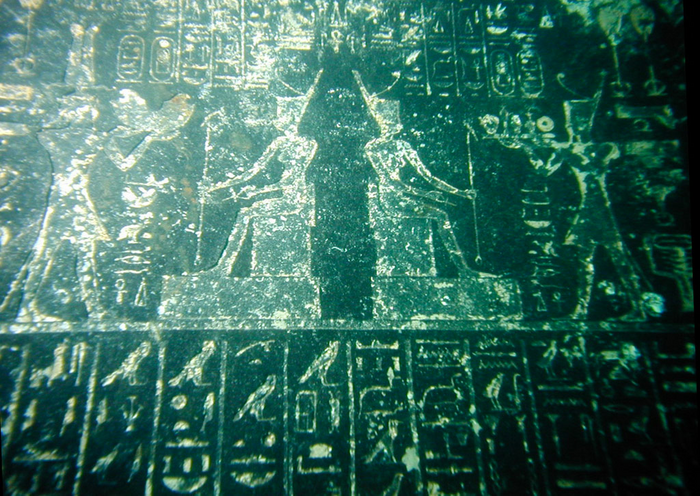
Not much is known about the city due to very few references made throughout history. Ancient historians, Diodorus and Strabo, made references to Heracleion in their texts– it was also believed that Helen of Troy frequently visited the port.
Doomed to the Sea
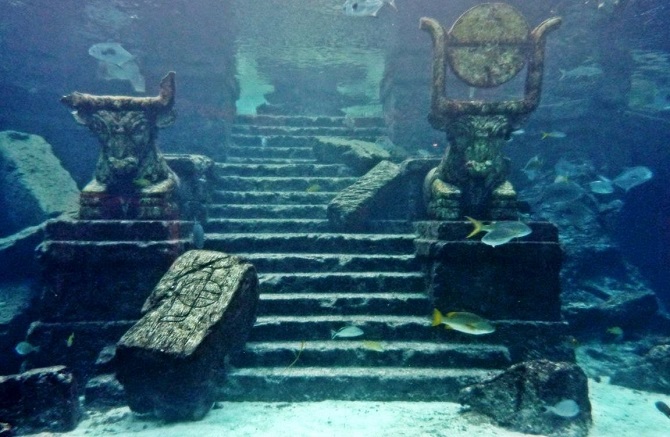
According to the few documents that still exist, it is believed that the city sank in the 3rd or 2nd century A.D. Due to the liquefaction of the silts that the city was built on, a few tremors are all it took to sink the city. Up until now, it was believed that the city was lost forever.
Franck Goddio

In the year 2000, French archaeologist and deep-sea diver Franck Goddio located the ruins unexpectedly while diving with his team in the Abu Qir Bay. The find was of great historical significance within the preservation community and even attracted the attention of museums around the world.
An Unprecedented Discovery
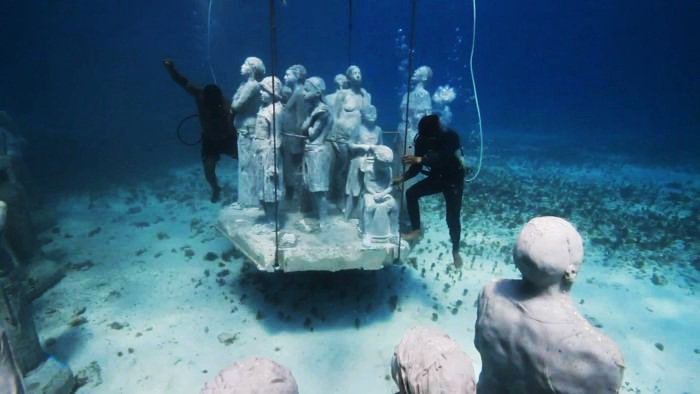
From stunning statues of gods and goddesses to treasures made of gold with precious stones, the discoveries found within the sunken ruins were breathtaking to say the least. Here’s a group of divers discovering a cluster statues. What other treasure awaits at the bottom of the sea?
Celebration of the Gods

Goddio and historians were particularly intrigued by some of the artifacts they found because they proved that the city was the site of a celebration for the “mysteries of Osiris.” According to historical records, this celebration involved a trip where travelers left the port city and gathered at the temple of Amun.
The Pharaoh Statue
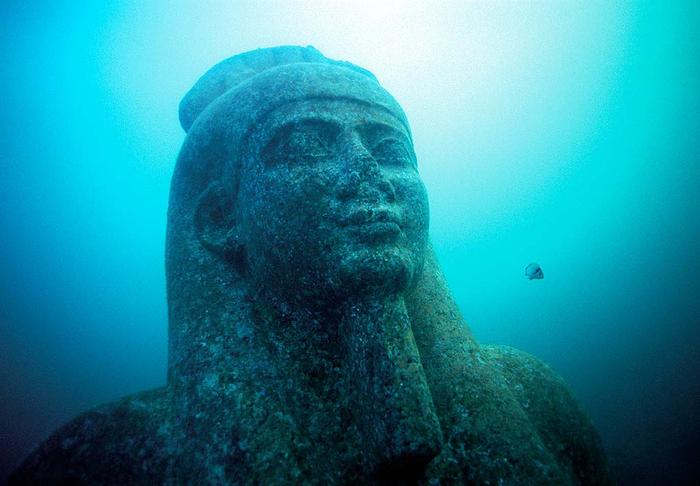
One of the first relics to be uncovered was an enormous statue of a pharaoh. Intricately handcrafted from stone, it is estimated the statue would have been around 16-feet tall when standing. The location of the statue was near a large temple, which means it could have once been located near a place of worship.
The Mighty Thonis

Another statue found near the same site provides a haunting look at the past. Depicting one of the many gods worshiped in Heracleion, this relic provides another look at the art and culture of the time.
Hapi Preserved

Another statue was found carved from red granite. This stunning display of craftsmanship is of the god Hapi. According to history, Hapi was known as the god who caused the flooding of the Nile. One has to wonder if supernatural forces caused the city to sink.
Great Care & Diligence
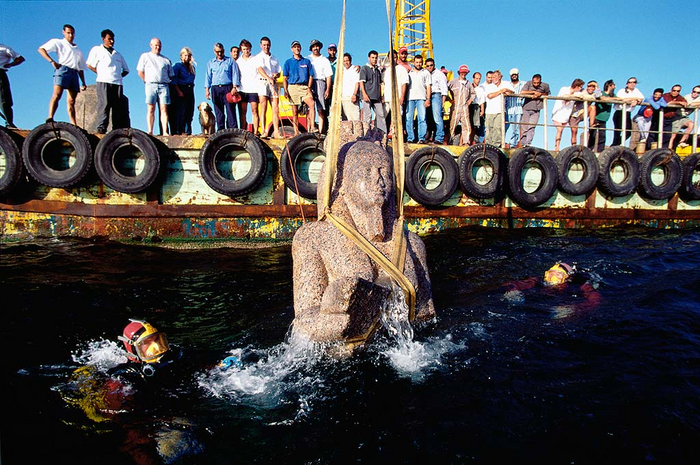
Bringing the relics to the surface took a great deal of care due to their age and how easily they could be damaged. This statue took a whole team of researchers, as well as a group of divers, to bring it to the surface before being shipped off to a museum for safekeeping.
Another Relic Resurfaces
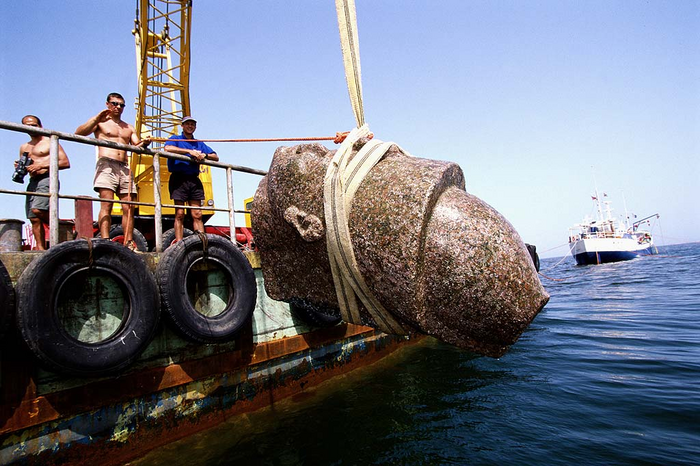
Here’s another glimpse of a piece of a statue being carefully brought on board one of the salvage ships. Stunning and almost daunting in size, the city must have been a sight to behold during its prime. What could have caused the port to fall into ruin? It may be lost to the tides of the past forever.
Scattered Across the Ocean Floor

One of the problems the researchers encountered was that many of the larger artifacts were broken into many different pieces. This could have happened when the city sank, once powerful tremors hit the area. Unfortunately, it made the divers’ jobs harder as they tried to piece together the puzzle.
Restoration & Patience
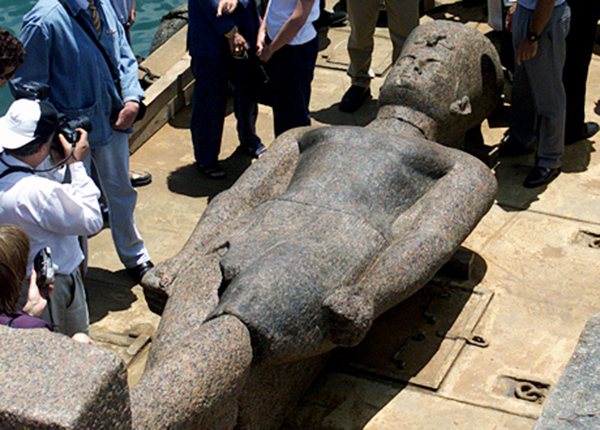
Thankfully, the research team was successful in restoring many of the destroyed pieces of history. For example, statues of the pharaoh, the queen, a piece of the temple wall, and the god Hapi were put back together with careful detail. When originally found, it was all broken into 17 pieces.
Sphinx in Pieces
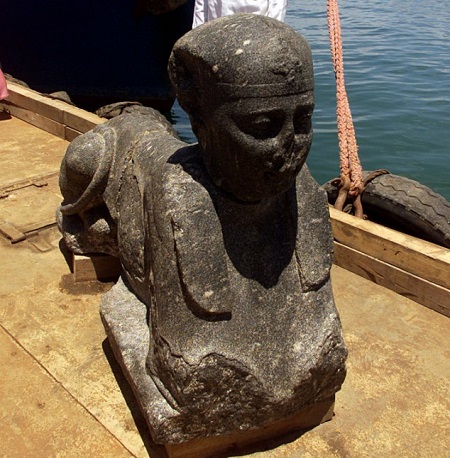
This sphinx was another relic that was brought up to the surface. While not fully intact, its beauty still inspires. One has to wonder how tied the city was to the ancient Egyptians. As this sphinx reveals, the art style is different than the traditional Egyptian sphinx.
Large and in Charge
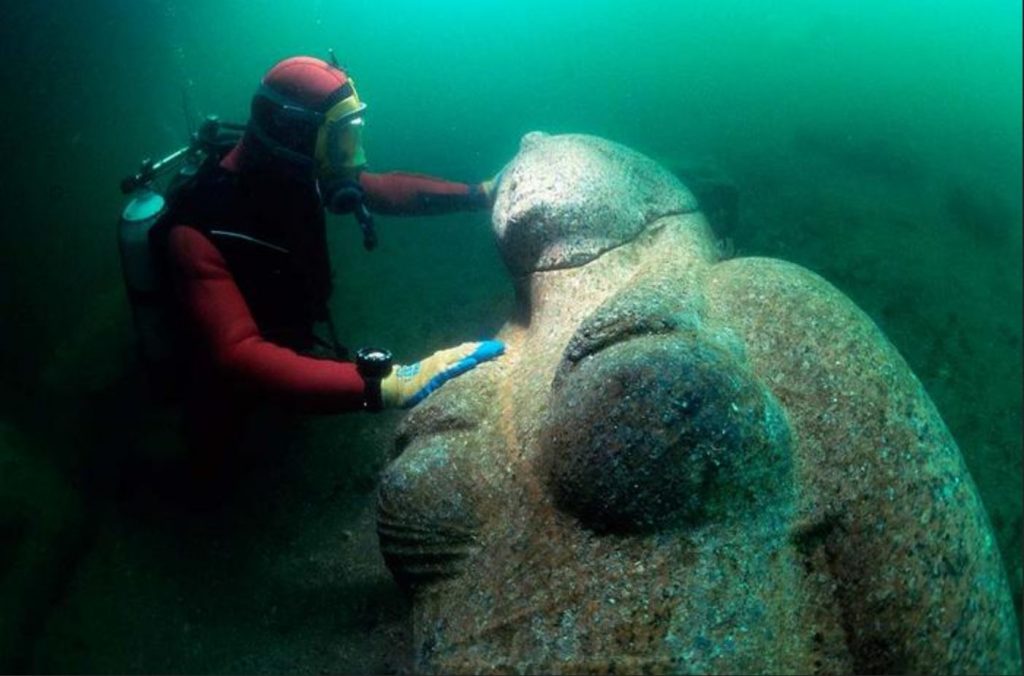
As the divers continued to reveal new finds at the bottom of the bay, this monster statue of what appears to be a goddess was discovered. Trapped in the rock and rubble, it was determined to weigh over four tons! If only we could have seen it in its full glory.
The Great Queen
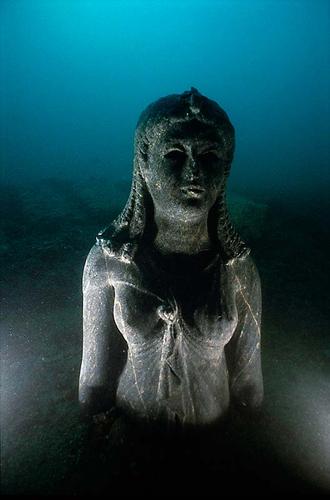
Another statue found further out in the bay was one of the Ptolemaic queens. Historians believe it could be a representation of Cleopatra II, adorned in robes, as the goddess Isis. Based on the types of statues found, it seems the port city was very oriented around religious symbolism.
An Ornate Find
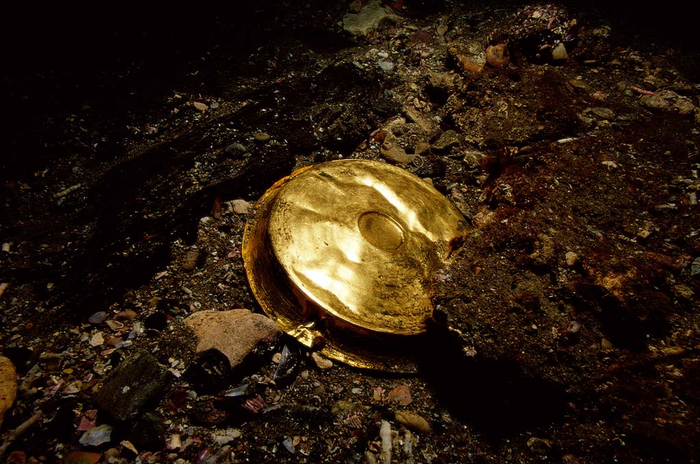
The divers were absolutely amazed at the condition of the treasure found buried in the sand and rock. This saucer, made of pure gold, was once used for drinking and for serving various dishes to royalty.
An Empty Tomb

This empty tomb wowed the divers upon its discovery. Unfortunately, it was too heavy to bring to the surface; however, it’s an excellent example of some of the stunning architecture found beneath the sea. How did this go unnoticed for all these years?
Treasures Under the Sea
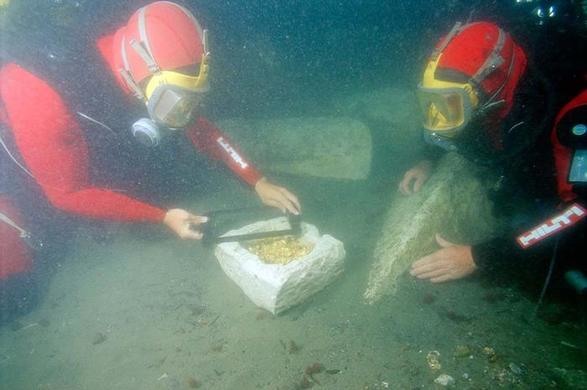
Another discovery that wowed the archaeologists and diving team was this stone filled with gold fragments. Perfectly intact, it seems that the treasure was stored in an effort to keep it protected. Could it possibly have been part of a gold supply for trading or could it have been for serving goblets and dishes?
A Haunting View

As more relics were uncovered, piece by piece the history of this once great port city was put together. Architecture that revealed an attention to detail and an honoring of the gods, proved the wealth in the city was unrivaled. Did mother nature wipe bring this city to its knees?
A Stunning Plaque
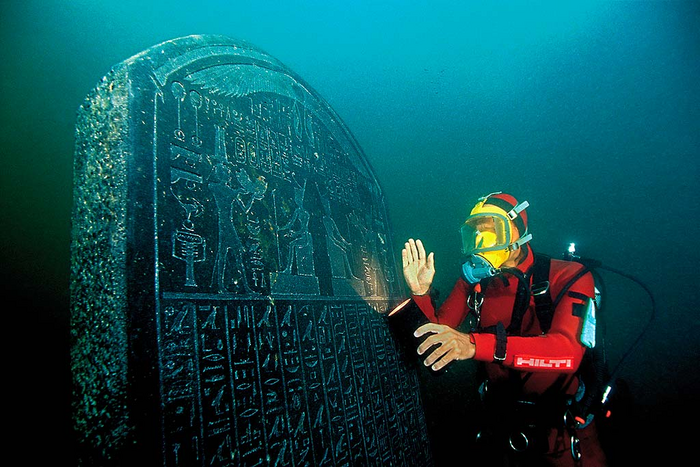
Franck Goddio was most impressed by this ornately detailed plaque that features completely-intact hieroglyphics. It is believed that the relic was commissioned by Nectanebo I around 378 B.C. Can you believe how well preserved it is? Goddio was shocked that the plaque, also known as a monolith had been able to withstand the harsh elements of the ocean.
The Relic Resurfaces
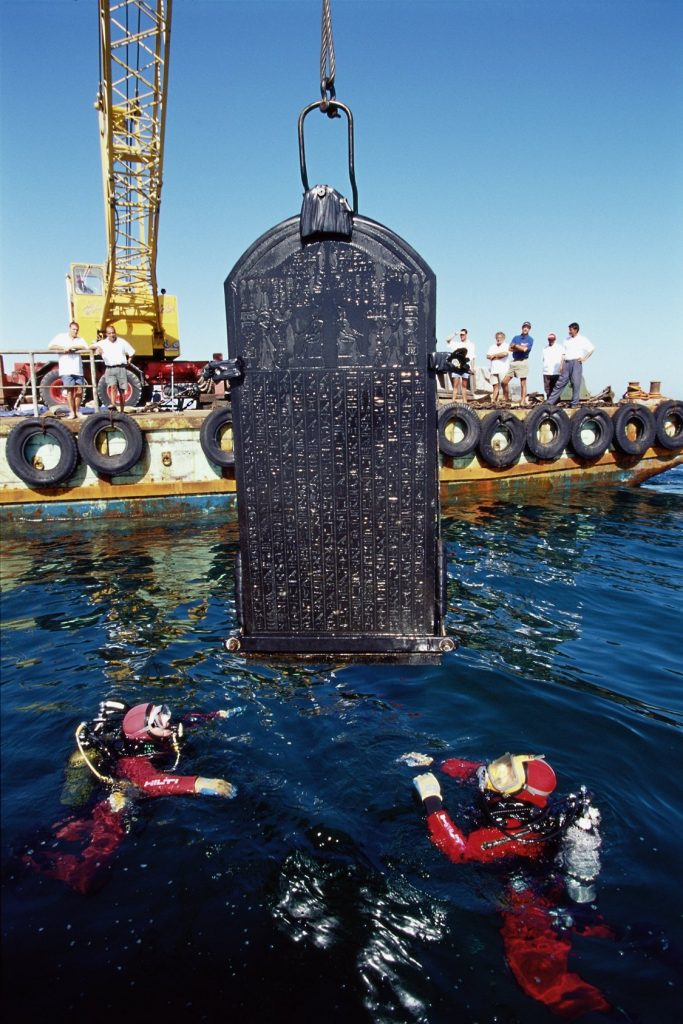
Goddio was worried about bringing the relic to the surface. The fear was the changes in water pressure could damage the fragile monolith. Thankfully, the diving crew was able to bring the plaque to the surface without damaging it.
More Gold Found
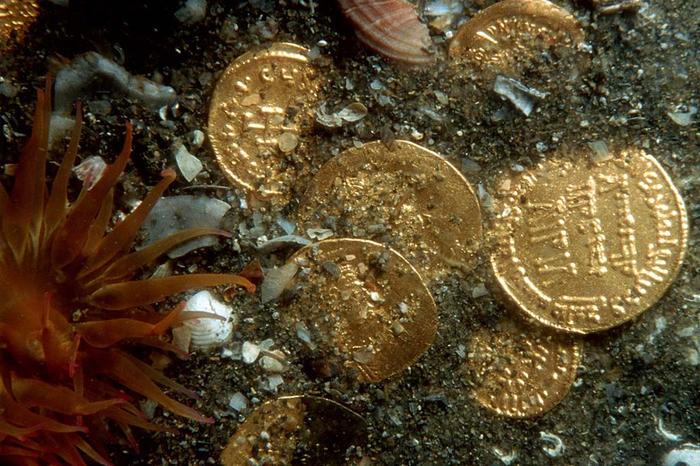
Evidence that the city was once a productive port continued to pile up with the discovery of more gold pieces on the floor of the ocean. Today, they’d be worth millions. Even more awe-inspiring was how well intact the gold was, with ornate etchings on each coin perfectly preserved.
Osiris Rises

This statue of Osiris was another great find by the diving team. Look at the attention to detail that still remains in the crumbling stone. Proving that time does not always defeat art, this statue is just one of the many amazing discoveries beneath the sea.
No Stone Left Unturned

Due to its historical significance, every inch of the ocean floor in the Bay has been recorded for preservation purposes. Since much of the city was broken apart, it was imperative that the area was meticulously documented. The archaeologists who were involved did not want to risk leaving something important behind.
Beneath the Sea Floor
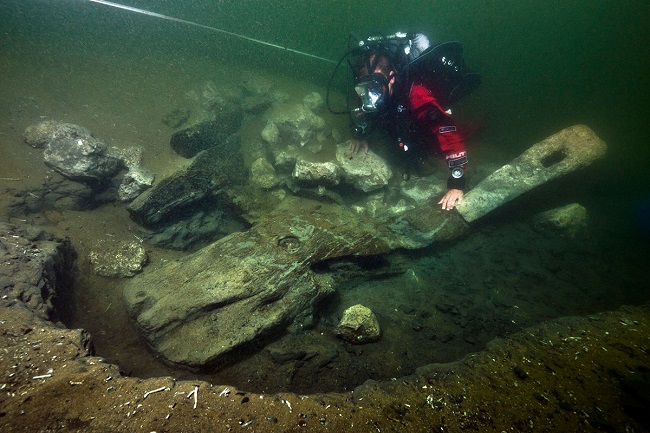
While many of the buildings were reduced to rubble when they sank, the divers did find remnants of what used to be stunning temples and homes. As the ocean floor was removed layer by layer, more of the city’s mysteries were uncovered.
An Oil Lamp Frozen in Time

Another amazing find, this oil lamp was completely intact resting at the bottom of the ocean. Dating back to 2nd century B.C., it’s almost like a work of art, with the passage of time only adding to its beauty.
Discoveries Left to Be Found
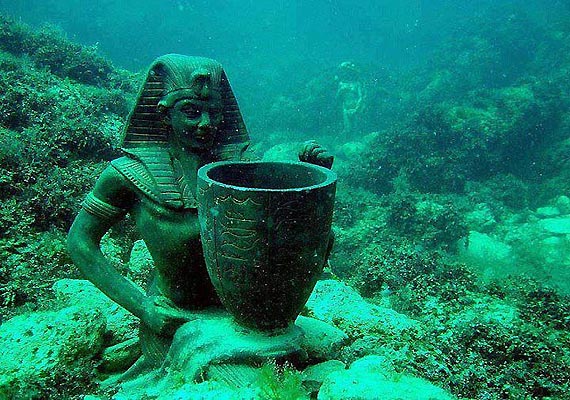
Many of the pieces found at the bottom of the ocean are now housed in museums for preservation and study. Who knows what clues may be unlocked from these relics as the years pass, but it is an excellent example of how we continue to fill in the blanks of our world’s history. We can only imagine what is still waiting to be found beneath the blue depths.








